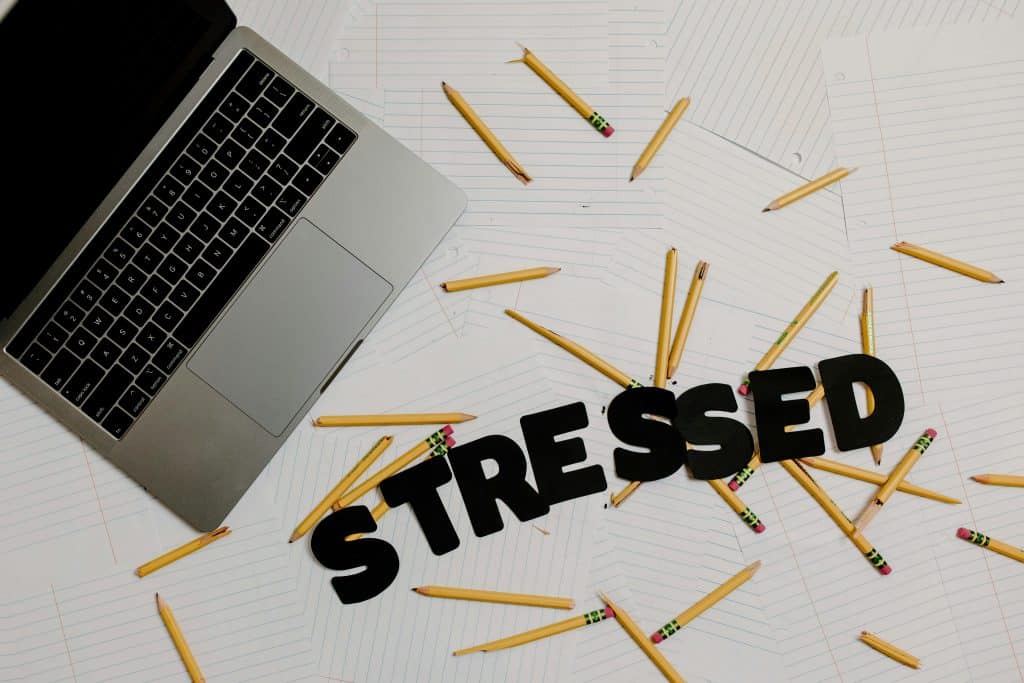In 2025, learning how creating boundaries to protect your mental health is a survival skill. As remote work blurs personal and professional lines, and social media intensifies mental stress, setting clear boundaries has become essential. This guide offers practical strategies rooted in emerging trends—from digital detox movements to structured work-life separation—to help you reclaim mental clarity, reduce burnout, and feel grounded again.

Why Boundaries Are Emerging as a Mental Health Trend in 2025
1. Remote Work and Always-On Culture
The rise of remote work means many remote workers go days without leaving home and struggle to disconnect from work devices. This blurring of work-life boundaries fuels burnout and mental fatigue. Without clear boundaries, the pressure to be constantly available becomes overwhelming.
2. Doomscrolling and Digital Overload
Excessive use of social media, especially doomscrolling, has been shown to dramatically increase anxiety, insomnia, and physical symptoms. One recent study found doomscrolling users were up to 12 times more likely to experience serious mental health issues, including stress and disrupted sleep.
3. Clinical Recognition of Digital Boundaries
Mental health professionals now focus on setting healthy boundaries not only interpersonally, but digitally. Tools like Screen Time, parental control apps, and grayscale modes help reduce usage and minimize distraction-related anxiety.
Emerging Trend: Structured Boundary-Setting Movements
Phone-Free Mornings & Intentional Detox
A growing behavioral trend in 2025 is the concept of “phone-free mornings” or partial detox periods. Studies show avoiding screens during the first hour of the day lowers cortisol and sets a calmer tone. Campaigns like “Phone‑Free February” encourage gradual reduction of smartphone use, which improves sleep and reduces depression symptoms.
Workplace Boundary Culture
In modern workplaces, mentally strong professionals are learning to resist constant availability. Setting tech-free periods, avoiding over-apologizing, and carving out distraction-free time for focused tasks are becoming norms for protecting mental health.
Organization-level shifts include formally embedding boundary practices—like no‑meeting hours, mental health breaks, and workload limits—into policy and leadership training.
How Creating Boundaries to Protect Your Mental Health Works
When you understand how creating boundaries to protect your mental health functions, you gain tools that reduce stress and support emotional resilience.
Protects Focus and Emotional Energy
Setting limits around digital interactions and emotional labor ensures valuable cognitive resources aren’t drained by endless messages, interruptions, or constant context switching.
Enables Work-Life Separation
Clear boundaries help separate work from home life. For example: “no work notifications after 7 pm,” or avoiding social media at bedtime improves sleep quality and emotional regulation.
Reduces Anxiety and Bad Scrolling Habits
Time limits on apps, curated feeds, and intentional disengagement reduce compulsive behaviors and mental exhaustion.
A Practical Guide: Creating Boundaries to Protect Your Mental Health
Here’s a step-by-step system to help you establish meaningful boundaries in daily life.
1. Audit Your Stress Sources
- Track when you feel anxious, distracted, or overwhelmed.
- Note triggers: late-night notifications, doomscrolling, unclear expectations at work, or emotional overcommitments.
2. Define Boundary Zones
- Choose physical zones (e.g. bedrooms, meals, digital detox hours).
- Identify temporal boundaries (e.g. no-check hours before bedtime, Friday evenings free from work).
- Emotional boundaries: craft polite scripts to say no, pause before committing to tasks or conversations.
3. Adopt Digital Tools to Enforce Boundaries
- Use built-in apps like Screen Time or Digital Wellbeing and tools such as Forest, Offtime, Freedom to limit usage.
- Use grayscale modes or silence modes to reduce engagement triggers.
4. Schedule Work-Life Separation Routines
- Set consistent start and end times for work.
- Block focus hours where notifications are muted, and no-interruption work is prioritized.
- Incorporate regular screen breaks and leisure crafting—offline hobbies, movement, or meditation.
5. Build Emotional and Social Boundaries
- Use assertive communication: prepare simple scripts like “I choose not to check messages after work hours” or “I need a day to focus.”
- Avoid energy-draining interactions and protect inner focus by limiting emotional labor demands.
6. Reflect, Reinforce, and Adjust
- Weekly reflection: note which boundaries held and which felt slippery.
- Adjust as needed: extend phone-free hours, tweak notification settings, or renegotiate collaborative norms.
- Ensure leaders and colleagues understand and respect your boundaries.
Real-Life Scenario: Marina’s Boundary Reset
Before:
Marina, a digital marketer, experienced burnout from constant notifications, emotional labor in team chats, and late-night social media browsing.
After:
- She implemented phone-free mornings and evenings.
- She used app blockers (Forest, Screen Time) to enforce limits.
- At work she negotiated no messages after 7 pm and used time‑blocking for focused tasks.
- She practiced saying polite but firm “no” to non‑urgent requests.
Results: Reduced anxiety, improved sleep, two hours of extra downtime daily, and reclaiming weekends for personal passions.
Common Misconceptions About Creating Boundaries to Protect Your Mental Health
“Strict rules are unnecessary if you’re disciplined.”
Without external boundaries, internal motivation can wane—especially when stress mounts. Structure supports consistency.
“Disconnecting feels rude.”
Boundaries benefit everyone. Communicating them clearly is respectful and fosters mutual understanding.
“Digital tools remove flexibility.”
On the contrary, they support intentional use. Tools like Freedom or Offtime can adapt as your needs evolve.
Why Creating Boundaries to Protect Your Mental Health Matters Now
In 2025, the mental health ecosystem recognizes boundaries not as rigid restrictions but as flexible guardrails that empower clarity and emotional balance. With trends showing increasingly addictive digital behavior, blurred work-life lines, and rising burnout, setting boundaries is a proactive act of self‑care and productivity.
Organizations that model boundaries and support employee emotional resilience foster stronger trust, better retention, and healthier performance. Individually, boundaries form the foundation for mindful digital well-being and sustainable mental health.
Conclusion
Creating clarified routines, digital limits, and emotional boundaries is no longer optional—it’s a strategy for well-being in an always-on world. When you focus on creating boundaries to protect your mental health, you give yourself space to breathe, think clearly, and connect meaningfully. Start small—a phone‑free morning, an evening cutoff, a polite “no”—and build from there. Over time, these small changes compound into enduring clarity, resilience, and peace of mind.
References
- Doomscrolling makes you 12 times more likely to suffer serious mental health issues – Daily Telegraph (Australia), recent study https://thehubcoworks.com/remote-work-2025/?utm_source=chatgpt.com
- Why saying “no” and setting limits helps mental health – AP News, mental health experts https://www.kidsmentalhealthfoundation.org/about/media-center/press-releases/parental-survey-shows-privacy-safety-concerns-with-screen-time?utm_source=chatgpt.com
- Phone-Free February campaign reduces stress and improves sleep – Verywell Health https://www.verywellhealth.com/phone-free-february-mental-health-8787836?utm_source=chatgpt.com









